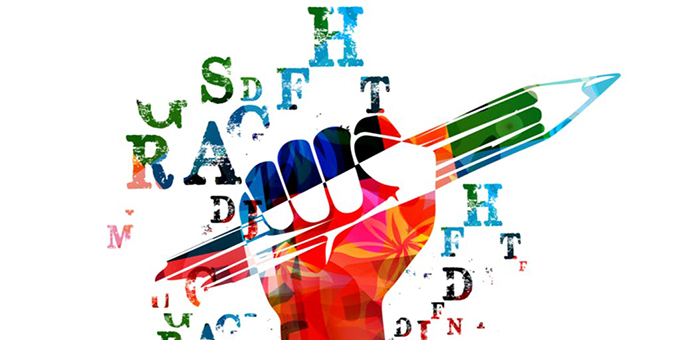
On the 18th of July 2018, I got a message, through the contact form on my website, from Richard Phillips who had a University of Sheffield email address. The message was brief, and said: “Dear Helen, I would like to explore the possibility of involving you in a workshop on creative writing and social research, and have a budget for this. It would be great to hear from you and discuss. Thanks, Richard”.
I had never heard of Richard, but he had obviously heard of me. I don’t think he knew, though, that his message fell squarely into the category of “beyond my wildest dreams”. I don’t talk about it much online, but I have done quite a lot of creative writing in my time. I have sold stories for publication in magazines, and even had a novel published once (under a pseudonym and no, I’m not telling). I love creative writing, and use creative writing techniques when I teach my Creative and Productive Thesis Writing course, as well as in my own scholarly writing.
This post is an invitation to explore this mode of writing more in your research.
People don’t often see academic writing as ‘creative’.
Think about it, though: if you’re putting words together to make sentences, and sentences to make paragraphs, that have never been written before, that’s creative, right?
The techniques of fiction and non-fiction are not entirely separate. Good non-fiction requires good storytelling, just as much as good fiction. There is scope for academic writers to use storytelling techniques more often used by fiction writers, such as conflict, the creation of tension, and drama. A few writers know this already. One is Alice Dreger, the author of Galileo’s Middle Finger: Heretics, Activists, and the Search for Justice in Science, a fascinating book about the relationship between research and activism. Here is the very first paragraph:
Soon enough, I will get to the death threats, the sex charges, the alleged genocides, the epidemics, the alien abductees, the antilesbian drug, the unethical ethicists, the fight with Martina Navratilova, and of course, Galileo’s middle finger. But first I have to tell you a little bit about how I got into this mess. And explain why I think we now have a very dangerous situation on our hands.
(Dreger 2015:1)
That is a first paragraph that many published novelists would envy. Yet Dreger is writing, essentially, about research ethics – a topic usually regarded as tediously dry. All the ingredients are there: drama in abundance, conflict (with Martina Navratilova, no less), and tension. What is the mess she is in? What is the dangerous situation we have on our hands? As a reader, I have to know.
Of course, writing like this takes some skill, but it is a craft that can be taught and learned. Even small-scale techniques can have considerable impact. Here’s an example in another book about research ethics, Behind Closed Doors: IRBs and the Making of Ethical Research by Laura Stark, who did ethnographic research into institutional review boards (IRBs) and how they make decisions. The book is mostly written in a clear non-fiction style. The introductory chapter ends like this:
There is no dispute that the current research review system is flawed. On this everyone agrees: board members, administrators, and researchers. But the fact that IRBs provoke such heated debate is all the more reason to understand how these declarative bodies came into being and how they actually do their work. And so, on a dreary May afternoon, I stepped out of an elevator at Adams University Medical School, walked down a windowless corridor, and opened the conference room door where the IRB meeting was about to begin.
(Stark 2012:8)
In the last sentence, almost imperceptibly, Stark introduces sensory language to bring us with her as she steps out of an elevator and walks down a windowless corridor to observe her first IRB meeting. That is likely to evoke a memory for anyone who has also walked down a windowless corridor, as many of us have, and again it is very clever writing which makes the reader want to turn the page and find out what happens next.
Richard and I did run a workshop together, in Sheffield, over two days in November 2018. We invited all the people we knew who we thought would be interested. Most of them came, and most of those who couldn’t make it were regretful. We had a lot of fun and Richard and I ended up writing a book, Creative Writing for Social Research, which came out in January 2021. It includes 14 short creative contributions from some of the people who attended the workshop, including sports researchers, artists and makers, geographers, comics creators, education researchers, poets and animators. These contributions include, or are linked with, plays and poems, videos and comics, as well as stories in prose. The book’s companion website hosts complementary resources.
Our aim with the book is to show researchers some ways to use creative writing – and not only in your writing, because creative writing can help us to work with participants, generate and analyse data, as well as communicate findings.
There is so much scope for synergy between creative writing and social research. I am excited to see how this relationship develops over the coming years and decades.
Author Bio: Helen Kara ,FAcSS, has been an independent researcher since 1999 and an independent scholar since 2011.
